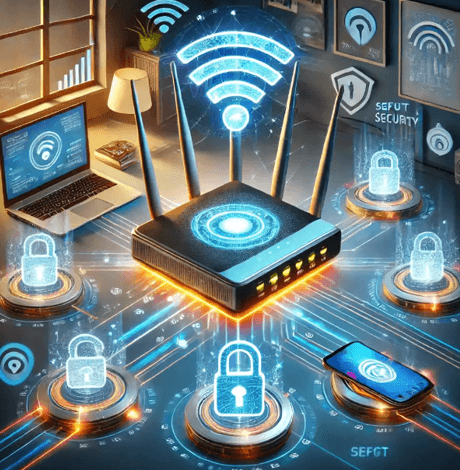How to Secure Your Wi-Fi Network from Unauthorized Access

As Wi-Fi is widely used in home and office environments, protecting your Wi-Fi network from unauthorized access is crucial to keeping your personal data safe and ensuring smooth internet performance. Unsecured networks can easily be exploited by hackers or unauthorized users, slowing down speeds or exposing sensitive information. Below are practical steps to help you secure your network and prevent intrusions.
Steps to Secure Your Wi-Fi Network
Follow these practical steps to enhance your Wi-Fi security and prevent unauthorized access.
1. Change the Default Router Login Credentials
Most routers come with default usernames and passwords, such as “admin.” Hackers can easily find these credentials online and use them to access your router’s settings. To prevent this, log into your router’s admin interface by typing 192-168-l-1 into the browser. Navigate to the Administration Settings section and create a new username and password with a mix of letters, numbers, and symbols.
2. Enable WPA3 Encryption
WPA3 is the latest Wi-Fi security protocol, offering stronger encryption than its predecessor, WPA2. To enable WPA3, log into your router’s settings and go to Wireless Security Settings. If some older devices in your home aren’t compatible with WPA3, you can select WPA2/WPA3 mixed mode for seamless connectivity without compromising security.
3. Set a Strong Wi-Fi Password
Use a combination of uppercase and lowercase letters, numbers, and symbols, and avoid easily guessable passwords like “12345678” or your name. Change your password periodically to stay ahead of intrusions. A strong password ensures that only trusted users and devices can connect to your network.
4. Disable SSID Broadcasting
By default, routers broadcast the SSID (network name) to make it easy for devices to find and connect. However, disabling SSID broadcasting hides your network, making it less visible to unauthorized users. Go to Wireless Settings in your router’s admin panel and disable the SSID broadcast option. While connected devices won’t be affected, it adds an extra layer of protection by making your network less obvious to outsiders.
5. Use MAC Address Filtering
By enabling MAC address filtering, you can control which devices can connect to your network. In the router’s MAC Filtering section, add the MAC addresses of your trusted devices. Even if someone manages to obtain your Wi-Fi password, they won’t be able to connect unless their MAC address is registered.
6. Keep Router Firmware Updated
Manufacturers regularly release firmware updates to fix bugs, improve performance, and address security vulnerabilities. To update your router’s firmware, log into the admin interface and navigate to System Tools or Firmware Settings. Enable automatic updates if available, ensuring that your router stays secure and optimized for performance.
7. Create a Guest Network for Visitors
A guest network isolates connected devices from your primary network, reducing the risk of unauthorized access to personal devices. In Wireless Settings, enable the guest network and assign a unique SSID and password. You can also limit the bandwidth for the guest network to prevent it from affecting your main network’s performance.

8. Monitor Connected Devices
Regularly checking the devices connected to your network helps you spot unauthorized access. Huawei and many other routers display a list of connected devices in the admin interface. Review this list periodically and disconnect or block any unfamiliar devices. Using monitoring tools through the router’s app or web interface ensures that only trusted devices remain connected, improving security and network performance.
Conclusion
Securing your Wi-Fi network is essential to protecting personal data and maintaining a reliable internet connection. By following the steps here to set up your network, you reduce the risk of unauthorized access and enhance your security. Additionally, regular firmware updates and device monitoring ensure your network remains safe and efficient, allowing you to enjoy a secure, hassle-free network experience.



